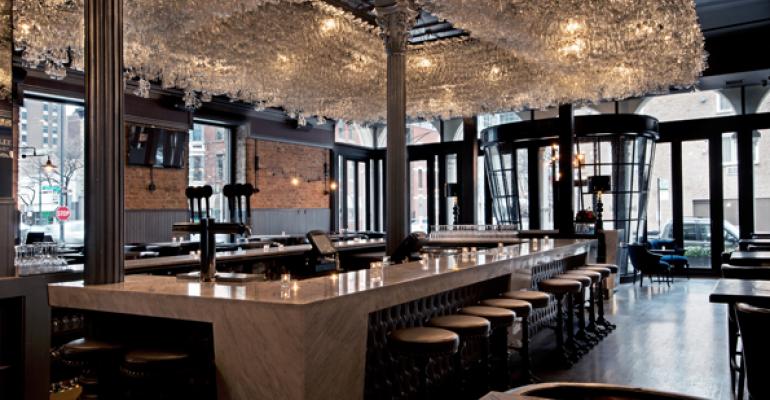Alpana Singh was bitten by the wine bug while waiting tables in college, and she landed her first job in the business selling it at a Carmel, CA, market. By 23, she had picked up enough wine smarts to get a job as a sommelier for Chicago’s revered Everest restaurant, and at 26, she aced her final Master Sommelier exam. She ended up as director of wine and spirits for Lettuce Entertain You Enterprises and host of her own restaurant review show, Check, Please! It came as no surprise that when she decided to launch her own restaurant (a collaboration with Matt Fisher and John Ward), wine would be the focal point. At the Boarding House, which opened in Chicago’s River North neighborhood last December, everyone from neophytes to serious oenophiles can indulge in a 500-bottle wine list, refined cuisine and a relaxed, unpretentious atmosphere. We recently spoke with this RH Rising Star (Feb. 2001) about her wine-focused world.
RH: What kind of questions did you consider when planning your first restaurant?
Singh: I definitely wanted to create a wonderful environment for people who are interested in learning about wine or enjoying it. I also wanted to create an environment that was a little bit atypical compared to what I have been seeing recently where wine has been going in restaurants.
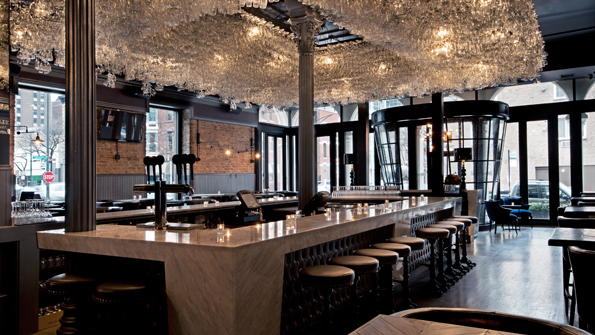
RH: For instance?
Singh: Because of the recession, people are downsizing their wine programs, understandably so. Being an operator at this point I totally understand why people are a little bit reluctant to put the investment, the man-hours and the dollars into creating a wine-driven program. There’s a lot of inventory that’s tied up, you obviously have to dedicate storage space, there’s stemware—it is an investment. But I don’t think I really had a choice considering what I’m known for is being a sommelier. So not having an incredibly interesting wine program? I don’t think I had that luxury. So my partners and I very much knew this would be wine focused, and we really sort of let wine drive a lot of what we do here. Obviously, the aesthetics of the space, with the barrels and a wine glass chandelier and bottle chandelier, and the infrastructure—the lower level, called the Cellar, is where we store all of our red wine: It reminds people that this is what we are here to do, this is what sets us apart. Chicago is an extremely competitive market, and so if you’re going to join the legions of great restaurants here, how are you going to be a little different? So where we put our best foot forward was with the wine program.
Other than that? I wasn’t really sure what to expect. I think naiveness is a very good description. Some great projects have been started by naiveness, because I think if you were privy to the enormous challenges involved in running a restaurant, the good ones make it look easy. I didn’t fully understand the emotional toll, the time, the effort, the energy it takes, especially when your name is on it. So you become very defensive, very protective of the brand and what you’re trying to do, and you take everything personally, whether it’s somebody who didn’t have a good experience or somebody who at the end of the night had a great time. You just want to make sure people walk out happy.
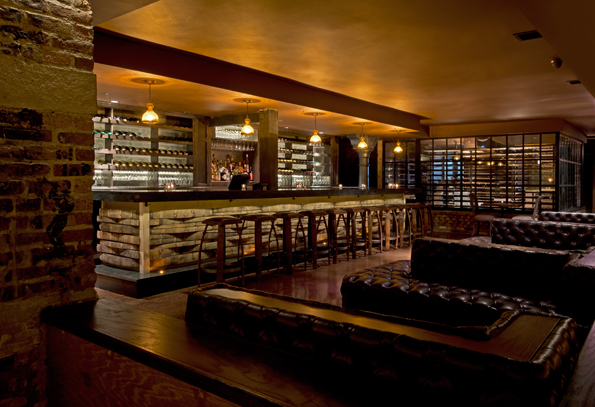
RH: What was involved in rehabbing this former boarding house into a functional multilevel restaurant?
Singh: It was a gut rehab. That’s why it took so long (16 months). I will never again ask anybody, “so when are you opening?” This building’s from 1872, and it has a lot of hidden secrets. We were working with inspectors from the city, trying to get everything up to code, and the building had been abandoned for four years. Another challenge was trying to figure out the best ways to use each space and how to maximize them. Between the menu programs, the food programs, the different atmospheres and everything from the aesthetics down to what the employees are wearing, there are a lot of decisions to be made. I think we rewrote the plans a dozen times.
RH: You have about 500 seats scattered over three floors. How do you efficiently handle that many guests on multiple levels?
Singh: We have two kitchens. The kitchen for the cellar and the bar is in the cellar, and the kitchen for the dining room is on the second floor. The second floor kitchen is bigger, which allows us to do an expanded menu there. The idea for the first floor and the cellar is to do more wine bar provisions, such as cheese and charcuterie; we also have pizza, salads. I’m also going to do an olive and nut program. It turns out we attract a huge amount of vegetarians. Maybe it’s just changing patterns in the way people eat, but people want incredibly interesting Mediterranean-driven flavors that are lighter and fresher.
The one thing that I’m very excited about is that people drink pretty much everything here. So there’s not a particular region that doesn’t really get noticed. You put it on the list and they’ll drink it, which is great. We are selling an enormous amount of wine.
RH: Define “enormous.”
Singh: Over the last four months we've averaged 7,000 glasses and 1,200 bottles a month—altogether about 50 cases. We average about $200,000 a month in wine alone.
Tailoring wine to customers
(Continued from page 1)
RH: How have you refined the wine selections since your opening?
Singh: We had a much larger number by the glass when we first started, but with three bars, I noticed a lot of product waste, because you would have three of everything open, and maybe one floor sold more of it versus another floor. But it was heartbreaking to see all this wine getting tossed out. So I had probably six or seven more wines by the glass when we first opened. I’ve reduced the program to no more than 20 at any given moment. But what I do now is I change it more often. I probably change the by-the-glass program at least twice a month, a couple selections, and once a month the entire program changes completely. It’s just stuff that I want to try, or because we sell so much wine I may only be able to get 30 cases of something and it goes pretty quickly here. So I’m somewhat forced to change it because we’ve sold everything.
RH: Clearly, you are selling a lot of wine. Are you selling it to wine aficionados, or the less-sophisticated type?
Singh: Both. One thing we often get complimented on is the varied demographics in here. The wine bar tends to attract a little younger audience—young in the sense of 30s to 50s—and in the dining room we get pretty much everybody. I have customers who are big collectors and they drink all my Grand Cru Burgundy, but then I also get the young couple who just had a baby and they’re just starting off in wine, and they want to try some things that are interesting and unique. The price points start at $38 a bottle and our most expensive bottle is a Salon magnum at $2,800. The $40 bottles sell; the $400 bottles sell. We have a lot from up-and-coming regions, so we sell a lot of Greek wine, from interesting areas throughout Spain, or it could be something like tempranillo from California to your more classic wines, the stalwart cabernet producers from Napa Valley, or the Cru Class A Bordeaux, or Barola and Barbaresco from Italy. It all sells.
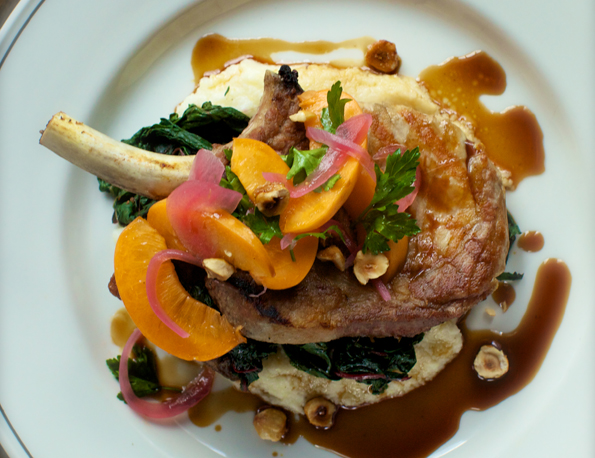
RH: How does your staff handle the varying levels of wine knowledge among your guests?
Singh: It begins with staff training. We have staff training every Tuesday for an hour. We cover pretty much everything. We do a lot of role playing; we might say, “Listen, I normally drink sauvignon blanc from New Zealand, what do you have that’s similar to that?” You can read body language, and certainly the types of questions that customers will ask, to figure out what the dynamic is. A good sommelier and a good server will pick up cues and body language, the way they are asking questions, the types of questions they are asking. It is a very delicate situation because you definitely don’t want to assume or insult you guests. But you also have to kind of let them guide you as to what they are looking for, and then fill in the details. But I think role playing and staff training are great ways to identify a lot of those situations.
In the end, whether the person is knowledgeable or somebody who is just starting off and they’re a novice, I always say start big, and work your way down: Would you like red, or would you like white? Would you like by the glass or by the bottle? One of my favorite questions to ask is: What do you normally drink? If you were going to a wine shop, what part of the wine shop are you going to explore? I always like to impress upon my staff that it’s all about the palate, not the price point. I’d rather get somebody a wine that fits what they are looking for and is $50 less versus trying to upsell somebody and knowing they are not going to like it—because they’ll drink it, and they’ll be fine, but they won’t come back. It always leaves a bad taste in somebody’s mouth when they feel like they are being forced into a sale. Especially in a restaurant like this, where it could be a special occasion, or somebody is entertaining clients. You just don’t want to make somebody feel uncomfortable and strong-armed into a sale. That is something I vehemently oppose, because it gives sommeliers a bad name.
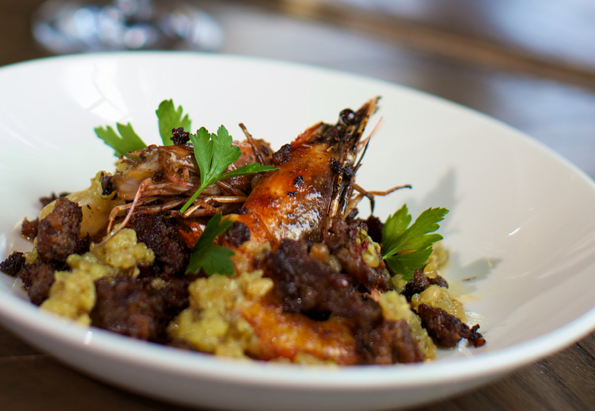
RH: How do you keep non-wine drinkers happy?
Singh: We have a craft cocktail program, and depending on the time of night, especially in the cellar, after 11 or so, at some point people just want a vodka/soda. I don’t want to be a snobby place, and wine places do get branded as snobby. We do things that are very intentional. I don’t do wine notes. We don’t do flights. We don’t do long descriptions on the wine list. In lieu of telling you about the rolling hills of Burgundy (which I think is interesting), I think people just get overwhelmed by maps and words. So our wine list is black ink on white paper, in a very easy-to-read font, and we have quotes. And we let the quotes drive the emotion of the region. Some of them are funny, there’s a selection of old-timey quotes, some from literature, some things that made me laugh from movies. There’s a bit of a sense of humor to how the wine list has been set up.
RH: What’s wrong with flights?
Singh: I like flights. I think they’re fun. But sometimes they send that message that wine is stiff or extremely droll, that I’ve got to sit here, and pay attention and make it more of an academic thing. In certain environments, I think that’s awesome. But we’re trying to make wine really sexy. We want it to be that place you can come to and have a glass of wine and be engaged in a conversation with your friend or your spouse or loved one, not necessarily talking about how much malolactin is in the chardonnay.
RH: Any short-term lessons from your recent experience?
Singh: I think a lot of times when you open a restaurant you’re just so excited about the process. And I’m a much different person today than I was even a few months ago. I have a lot more knowledge under my belt. With that being said, you take what you’ve learned and you apply it and try to make it better. You just keep tweaking every single day and try to make it better every single day.
Photography: Jeff Schear Visuals

